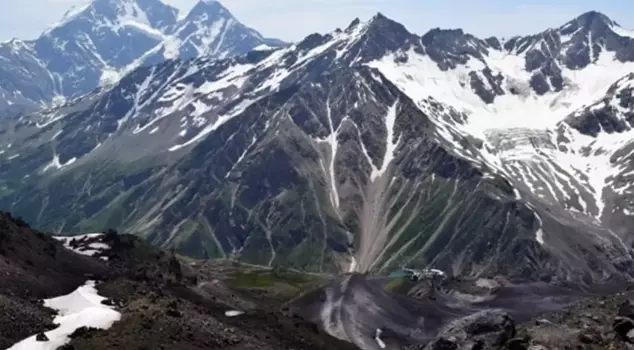
03.11.2025 21:57
It is predicted that due to global warming, 26-41% of the existing glaciers will be lost by the year 2100, and this rate is expected to increase further in the long term. Regionally, in the European Alps and the Caucasus Mountains, some scenarios anticipate the complete disappearance of all glaciers.
According to data from the National Aeronautics and Space Administration (NASA), global warming is causing increases in sea and air temperatures. As a result of this increase, glaciers that store large amounts of fresh water are rapidly melting. Antarctica, one of the largest ice masses in the world, loses an average of 135 billion tons of ice each year, while Greenland loses about 266 billion tons.
MAIN REASON: HUMAN ACTIVITIES
Dr. Matthias Huss, a faculty member in the Department of Civil, Environmental and Geomatic Engineering at ETH Zurich, evaluated the critical thresholds for glacier melting and the impact of global warming on accelerating melts in an interview with AA. Huss pointed out that the main reason for the changes in the world's ice sheet is directly related to climate conditions, stating that the primary cause of the changes experienced in the last century is the warming caused by human activities.
GLACIERS STARTED TO RETREAT AFTER THE LITTLE ICE AGE IN 1850
Huss recalled that the area covered by glaciers reached its highest point in the 1850s, which is why that period is referred to as the "Little Ice Age," stating, "Since then, glaciers have entered a retreat process, and especially in the last few decades, this process has accelerated significantly."
Pointing out that there is insufficient data regarding mass loss of glaciers worldwide over the last 100 years, Huss said, "However, it can be said that the loss is enormous. In the last 20 years, glaciers worldwide have lost more than 6,000 cubic kilometers of ice. This amount is greater than the massive ice sheets in Greenland and Antarctica and corresponds to 5% of the total volume."
40% LOSS SINCE 2000
Huss noted that the rate of glacier melting worldwide increased by about 36% during the years 2010-2020 compared to the previous decade, stating, "When the climate warms, glaciers begin to melt and retreat. Normally, during this process, glaciers try to regain balance by retreating to higher, therefore colder regions. If the rate of warming were slow, glaciers could adapt to these new conditions, and the rate of melting could decrease over time. However, today, global warming is progressing so rapidly that glaciers are melting quickly without establishing this balance. This indicates that the natural balance of glaciers with the climate has been disrupted and that this imbalance is increasing."
Huss pointed out that the impact of melting varies according to the density of the glacial mass on the continent, stating, "In Europe, glaciers are smaller, and the continent has experienced a 40% loss since 2000, with 25% of this loss occurring in the last 10 years."
Huss noted that regions with relatively small glaciers, such as the European Alps, the Caucasus, and the Rocky Mountains, are experiencing the fastest losses, stating, "In terms of total ice loss, regions like Alaska and Patagonia are in the most critical position. Generally, we can say that all glaciers in the world are currently losing ice. Outside of the ice sheets in Greenland and Antarctica, around the year 2000, there were approximately 700,000 square kilometers of glacial area and a total of about 160,000 cubic kilometers of ice volume worldwide. Although these figures have decreased by 5-10%, there is currently no precise global estimate."
ALL GLACIERS IN THE EUROPEAN ALPS AND CAUCASUS MOUNTAINS WILL COMPLETELY DISAPPEAR BY 2100
Huss indicated that depending on how the climate changes in the future, glaciers are expected to retreat even more significantly, stating, "Globally, it is predicted that 26-41% of the existing ice will be lost by 2100, and this rate may increase in the long term. Regionally, for example, in the European Alps and the Caucasus Mountains, some scenarios predict that all glaciers will completely disappear."
Huss emphasized that the most significant effect of glacier melting is the rise in global sea levels, stating, "By the year 2100, at least a 1-meter rise in sea levels is expected. This situation threatens billions of people living in coastal areas."
Huss expressed that glacier melting could also have various effects on ocean ecosystems, noting that the transport of sediment and nutrients to the coasts could be critical as a result of melting.
Huss concluded by stating that limiting global carbon emissions is the most important step to be taken, saying, "Reducing emissions to the lowest possible level can effectively balance the climate and can also help stabilize glaciers in the long term. At the same time, balancing the climate will yield many positive results in terms of reducing the impacts of extreme weather events such as heatwaves, droughts, and heavy rainfall."